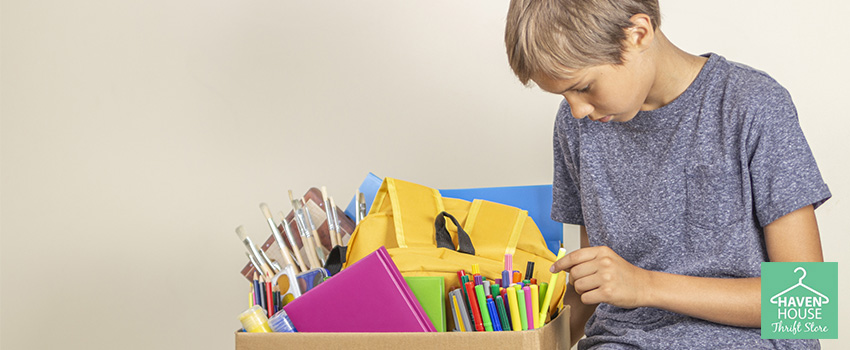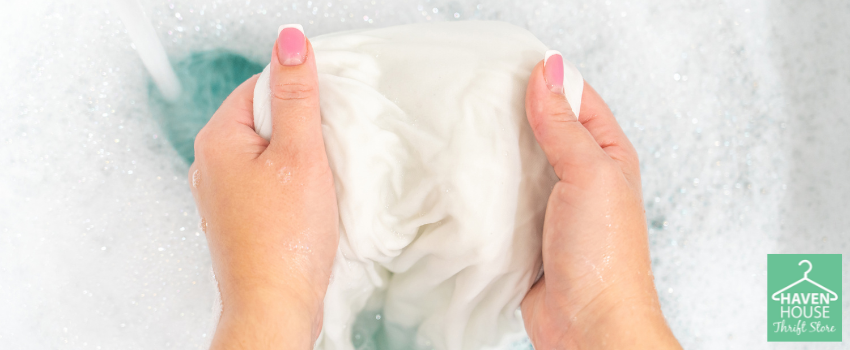Thrift shopping has experienced a remarkable surge in popularity in recent years as more people embrace sustainable and budget-friendly ways to update their wardrobes. Finding unique and vintage pieces at thrift stores can be an exciting treasure hunt, but one crucial aspect that cannot be overlooked is the cleanliness of these pre-loved garments.
Cleaning thrifted clothes is not only a matter of personal hygiene but essential for restoring their freshness and ensuring they are ready to be worn with confidence. In this guide, we will delve into eight essential tips for effectively cleaning thrifted clothes, covering everything from inspecting garments before cleaning to special care for delicate fabrics and the significance of disinfection.
The Importance of Washing Thrifted Clothes
The discussion of the importance of washing thrifted clothes is essential, addressing potential hygiene and health concerns, removing allergens and irritants from pre-owned garments, and preserving the longevity and quality of thrifted treasures.
It is vital to wash all secondhand or pre-loved clothing before wearing them, as there may be traces of bacteria or dust particles that can cause health problems. Additionally, thorough cleaning will help remove any allergens or irritants in the fabric that may transfer to the skin when worn.
Essential Tips For Cleaning Thrifted Clothes
When cleaning thrifted clothes, it’s important to remember that items may have been exposed to bacteria, viruses, other contaminants, pesticides, or other chemicals. Therefore, following these steps can ensure their thrifted clothes are clean and safe to wear.
1. Remove allergens and irritants from pre-owned garments.
Removing allergens and irritants from pre-owned garments is crucial for purchasing secondhand clothing. To help ensure the safety of individuals, pre-owned clothes should be washed and dry-cleaned before use.
Though washing with detergent may not remove all allergens or irritants, it can reduce their presence on the fabric. Additionally, a hot water cycle is recommended when washing thrifted clothes because it kills bacteria more effectively than cold water.
Another technique that may reduce allergens and irritants on thrifted items is soaking in lemon juice or vinegar before washing. These ingredients are known for their natural cleaning properties, which can help break down any odor-causing molecules that may be present on the garment’s material.
2. Preserve the longevity and quality of your thrifted treasures.

To maximize the life and quality of pre-owned garments, it is vital to take steps to care for them properly. Careful handling and cleaning can help preserve the fabric of a garment, as well as its aesthetic appeal.
It is recommended that items purchased from secondhand stores be washed before wearing to reduce the risk of transferring any unwanted allergens or irritants. Additionally, following the instructions on the garment’s label when washing and drying is essential.
When pressing thrifted clothes, use low heat settings or steam instead of high temperatures, which can cause damage to delicate fabrics or cause colors to bleed into one another. Finally, storing clothing properly in breathable bags prevents wrinkles and protects against dust and insects.
3. Choose appropriate cleaning methods based on fabric types.
Determining the appropriate method of cleaning for thrifted items depends mainly on the type of fabric from which they are made. Fabrics such as cotton, linen, and synthetic materials can usually be machine-washed in cold water with mild detergents.
Delicate fabrics such as silk should be handwashed in cold water with a pH-neutral soap or gentle detergent and hung to dry. Heavy fabrics such as denim or corduroy should be laundered using a heavy cycle on the washing machine with warm or hot water, depending on the colorfastness of the material.
Avoid using chlorine bleach and fabric softener for any fabric when laundering thrifted items. Dry clean-only garments should not be washed at home but taken to a professional dry cleaner.
4. Be cautious in incorporating disinfecting agents into the cleaning process.
Incorporating disinfecting agents into the laundering process can help ensure that thrifted items are hygienic and safe. Disinfecting agents can be added to either handwashing or machine washing processes.
However, it is crucial to understand the type of fabric and any possible color fading potential before adding them. The most common form of disinfectant used in laundering is chlorine bleach, which should only be used on white or lightly colored fabrics as there is a risk of staining darker colors.
Non-chlorine bleach should be used on colored clothing as it does not contain chlorine. It is also essential to follow the instructions provided on the product label, as overdosing can damage clothing and washing machines.
5. Know the proper way to treat stains.

Adopting pre-treatment techniques for common stains is essential in cleaning thrifted clothes. Various solvents and detergents can be used depending on the type of stain, including water- or solvent-based products.
Stains such as grease and oil require a solvent, while protein stains (e.g., blood or egg) should be treated with a water-based cleaner. For colorfastness, testing any product on an inconspicuous area before using it on the entire garment is advised.
Additionally, pre-treatment solutions should not be applied directly onto fabric; applications should be done on a cloth first and then gently wiped onto the stain. Aggressive rubbing can damage the fibers of the clothes. Gentle blotting motions are recommended instead.
6. Use natural remedies for removing odors.
Using natural remedies can be an effective way of removing odors from thrifted clothes. Vinegar, baking soda, and lemon juice are common ingredients that can help eliminate odors on clothing.
Adding a few tablespoons of white vinegar to the wash cycle will break down unpleasant odors while baking soda helps remove stains and odors. Lemon juice is also known for its deodorizing properties and can be added directly to the washing machine with other laundry detergents.
Additionally, placing thrifted clothes outside in direct sunlight for a few hours helps reduce musty smells and freshen up fabrics. Soaking the fabric in a mixture of water and essential oils such as lavender or tea tree oil may be beneficial for stubborn odors.
7. Clean embellished and beaded clothing without damage.
It is essential to take extra caution when washing thrifted clothes with embellishments such as beading or embroidery, as the delicate nature of these pieces may make them susceptible to damage. Hand washing is often the best choice for items with decorative additions.
Use a mild detergent and lukewarm water, and allow the garment to soak for no more than 10 minutes. After washing, gently rub any soiled areas with a soft cloth before rinsing in cool water. Hang dry if possible, or use a flat surface to lay it out on; never put beaded items in a dryer.
It is also advisable to avoid pressing these garments as this may cause the beads or embellishments to come off. Spot clean with care by dabbing at stained areas with a damp cloth instead of using harsh scrubbing motions, which can disrupt any delicate stitches or trims. For added protection, using a laundry bag designed explicitly for delicates can help keep decorations from coming loose during the wash cycle.
8. Proper cleaning of leather, suede, and fur items.

Caring for leather, suede, and fur items properly can help ensure they remain in good condition for many years. Before cleaning these materials, inspect the item for any signs of wear or tear. If any areas need repair or reinforcement, have a professional take care of them before attempting to clean the item.
Leather and suede should be wiped down with a soft cloth dampened with warm water; avoid harsh soaps and detergents as they could damage the material. Fur should regularly be brushed to remove dirt and debris; if more thorough cleaning is needed, use a specialty cleaner designed specifically for fur garments.
After cleaning, store leather and suede in an area away from direct sunlight to prevent fading or cracking; fur items should also be kept away from direct sunlight but hung up whenever possible to reduce wrinkles. With proper care and maintenance, thrifted leather, suede, and fur items can be enjoyed for many years.
The Bottomline
Thrifting can be a great way to find unique clothing while being economically and environmentally conscious. Properly cleaning thrifted clothes is essential for ensuring they are safe to wear.
Understanding the best practices for washing, disinfecting, treating stains, and handling delicate items is critical. With these tips in mind, thrifters can confidently take home their new finds, knowing they have done what they can to ensure the clothing is clean and safe.
Revive Your Thrifted Finds with Confidence: Discover Essential Tips With Haven House Thrift Store Today.
Are you a thrifting enthusiast looking to give new life to your unique finds? Discover our essential tips for cleaning thrifted clothes and transforming your garments like never before. Explore the treasure trove at our Santa Rosa Beach thrift stores and apply these cleaning techniques to unleash the full potential of your thrifted wardrobe. Your next favorite outfit awaits you at Haven House Thrift Store—visit us now and elevate your style!




